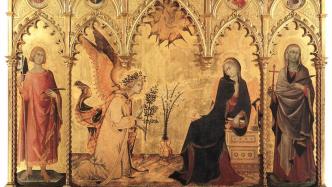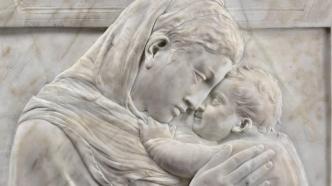
The UK's first large-scale exhibition "Donatello: Shaping the Renaissance", which explores Renaissance master Donatello, officially opened on February 11 at the British VA Museum. A total of about 130 exhibits were displayed in the exhibition, 50 of which made their debut in the UK. This special exhibition will provide a new perspective to examine the artist's outstanding talent and his influence on the cultural and artistic fields and subsequent generations of artists at a critical period in art history.
The Paper learned that the blockbuster works exhibited in the UK for the first time include the early marble statue of David, the bronze statue of Attis (Attis-Amorino) from the Bargello National Museum in Florence, the "San Mateo" from the National Museum of San Mateo in Pisa San Rossore Reliquary bust, and bronze statues on the high altar of the Basilica of St. Anthony in Padua.
Last March, "Donatello: The Renaissance" was exhibited in Florence, Italy.

Donatello, Madonna and Child, 1422, State Museum, Berlin
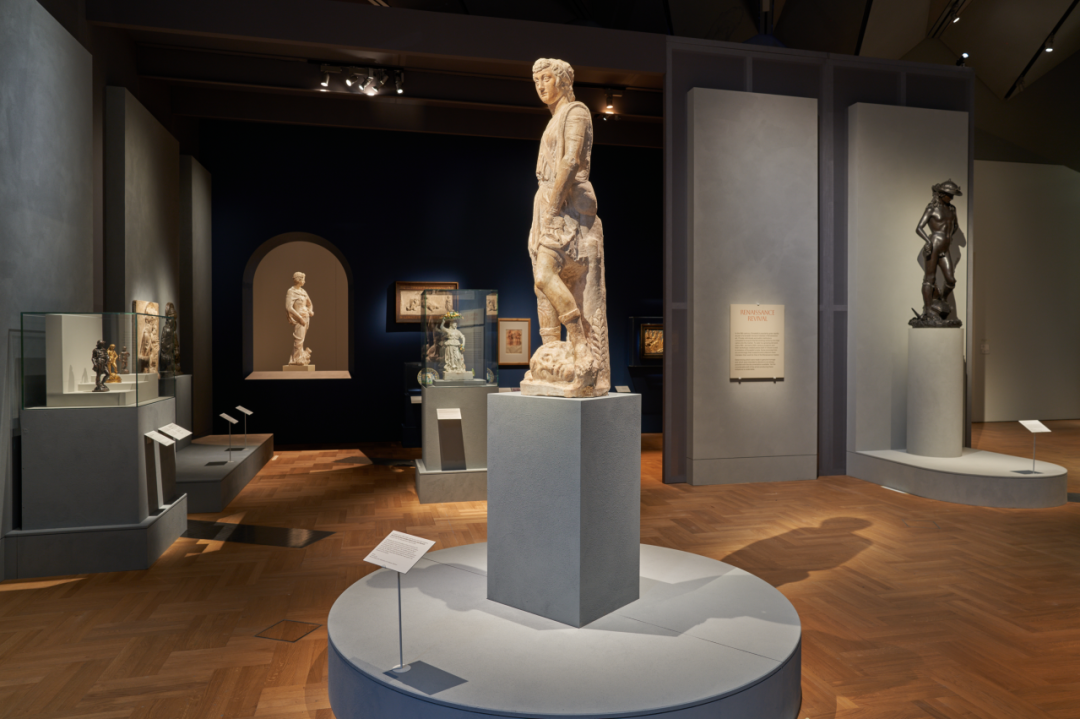
exhibition site
The Renaissance, which was carried out vigorously in Europe from the 14th century to the 16th century, was a time when a hundred flowers bloomed in the history of Western culture. Its openness of thought, progress of literature, and development of art sounded the clarion call of a new era in Europe. As far as art is concerned, the "three masters of the Renaissance" Leonardo da Vinci, Michelangelo, and Raphael overshadowed the brilliance of other artists, and Donatello (1386-1466) was one of them.
The exhibition is jointly presented by the V&A Museum in collaboration with the Palazzo Strozzi Foundation in Florence, the Bargello Museum and the State Museum of Berlin. The four major art institutions brought together their collections and professional curatorial experience in this series of exhibitions to pay tribute to Donatello through multiple perspectives.
The exhibition features around 130 works, including works from the V&A Museum's extensive collection, including works from the medieval and renaissance rooms of the museum, as well as reproductions of Donatello's works in the famous Cast Hall. Along with Donatello's own masterpieces, the works of representative contemporaries and their followers are also exhibited to jointly explore Donatello's core position in the development of Renaissance art and its background, as well as various interaction between materials.
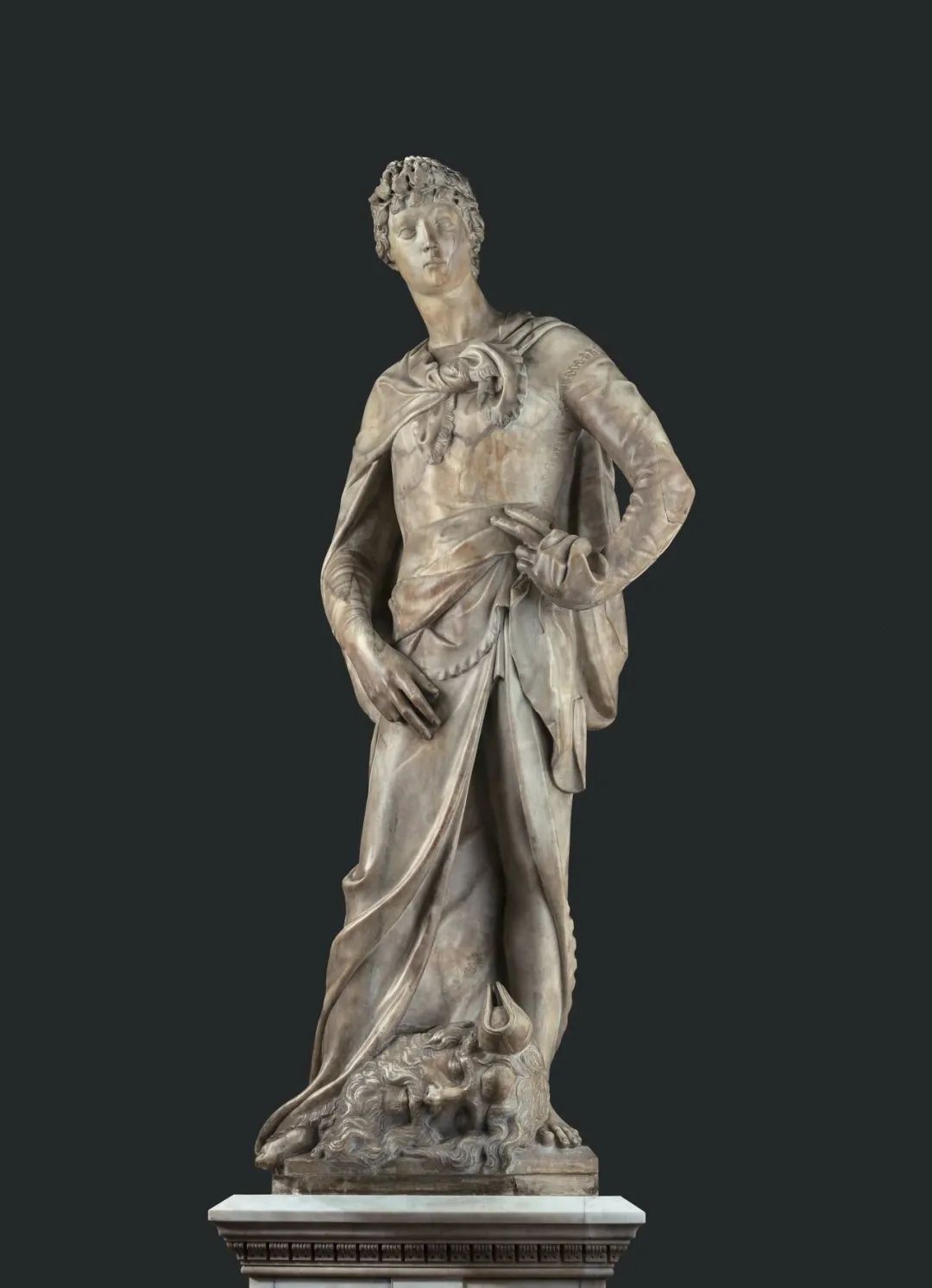
David, by Donatello, Museo Nazionale del Bargello, Florence, Italy. Courtesy of the Ministry of Culture. Photo: Bruno Bruchi
Donatello's major UK debuts include an early marble David, the Attis-Amorino bronze from the Bargello National Museum in Florence, the San Mateo National Museum in Pisa San Rossore Reliquary bust, and bronze statues on the high altar of the Basilica of St. Anthony in Padua.
The masterpieces exhibited together for the first time also include the relief sculpture "The Ascension with Christ giving the Keys to St Peter" from the collection of the V&A Museum, "Madonna of the Clouds" from the Boston Museum of Fine Arts. the Clouds), and the Panciatici Madonna by the contemporary sculptor Desiderio da Settignano from the Bargello National Museum.

Donatello and Michelozzo, Capital, bronze, Prato, Museo de L'Opera de Duomo,Two Adoring Angels, marble © Victoria and Albert Museum, London
Born in Florence, Donatello (c. 1386-1466) was one of the most creative and influential sculptors of the Renaissance. During a career spanning more than 60 years, his extraordinary sculptural masterpieces were at the heart of the Italian artistic and cultural revolution of the 15th century. In his creations, he is good at the creative manipulation of imagery, and is well versed in various sculptural materials and techniques, including marble, bronze, wood, clay, stucco and some unusual mixed media. He was closely associated with the Medici family and their circle in Florence, and was highly sought after in the rest of Italy. Donatello's remarkable creativity and insight into emotion allowed his sculptures to capture the essence of human experience and laid the foundation for many painters and sculptors who followed.
Donatello was a prolific artist. He learned bronze sculpture when he was young, and joined the studio of the famous sculptor Lorenzo Ghiberti at the age of 17. In his subsequent creations, he tried to incorporate classicism into a realistic style. He also shared a studio with Michelozzo and produced statues for many large tombs and buildings. In 1443, Donatello went to Padua, and his creation gradually reached its peak. In 1454, he returned to Florence, but his natural and elegant carving style was no longer in line with the artistic atmosphere at that time. He created it in Siena, and the two copper reliefs in San Lorenzo Church are his late works. A typical work, unfortunately it was not completed until his departure in 1459.
Donatello died in Florence in 1466. After his death he was buried in the church of San Lorenzo, next to the tomb of the Medici elder Cosimo de' Medici.

San Rossore, Donatello, by permission of the Ministry of Culture – Regional Directorate of Museums of Tuscany, Florence, Italy
Sculpture production usually goes through three stages: modeling, carving and casting. During the Renaissance, sculpture-making often took place in the bottega (manufacturer), which was the core of people's artistic training and art-making. Guilds of artists, craftsmen and merchants set the code for it. Bottega is often run by one or two masters, with several apprentices. Apprentices are trained here according to production needs, and they are good at imitating the style of masters in their creations. This mechanism fosters strong bonds within bottega, but also makes it often difficult to identify the authorship of the work.
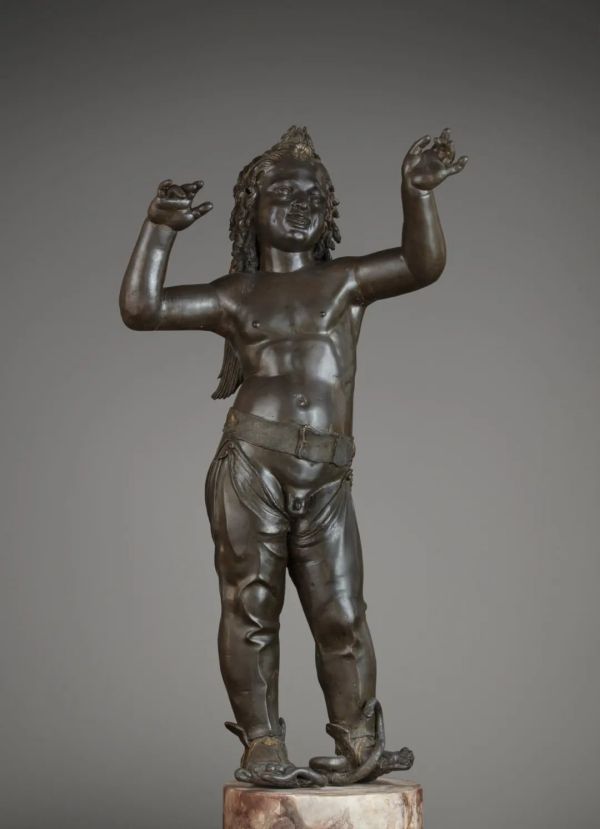
Donatello, Attis-Amorino, bronze, courtesy of Museo Nazionale del Bargello, Firenze and The Ministry of Culture Italy]. Photo by Bruno Bruchi
As a pioneer among 15th-century artists, Donatello paid homage to and responded to classics in innovative ways. In order to achieve special creative purposes, he often modifies and fuses the images of ancient Greece and Rome. Donatello employed various sculptural elements and forms, such as gemstones and busts. He made his works full of classicism by rendering the figure's figure, facial features and clothing. Donatello also combined innovative approaches in his creations with traditional Gothic iconography more familiar to his patrons.
Since Donatello's death in 1466, artists and designers have looked back to his innovative practice and emulated his unique style and pioneering techniques in a variety of mediums. Donatello was recognized as one of the greatest artists during his lifetime, and he continued to influence the development of the Renaissance after his death. He provided inspiration for some of the most revered masters of his time and later, cementing his place in art history. Donatello's influence lasted forever, especially in the 19th century, as people's enthusiasm for the Renaissance was rekindled, his works were more included in the collections of art institutions and seen in publications, Donatello visibility in the wider public sphere. This prompted many artists to imitate and work inspired by his sculptural masterpieces.

Madonna of the Clouds, by Donatello. Photo: © 2023. Museum of Fine Arts, Boston
Six major sections outline the legend of the master
The exhibition will be divided into six parts, comprehensively examining Donatello's artistic talent and its key position in important periods of European cultural development, and will focus on Donatello's career in the form of a combination of themes and chronology and the creations of his immediate followers, revealing the interplay between sculpture, painting, drawing and goldwork. At the heart of the exhibition is Donatello's innovative technique, describing how he combined ideas from classical and medieval sculpture to create avant-garde yet traditional pieces.
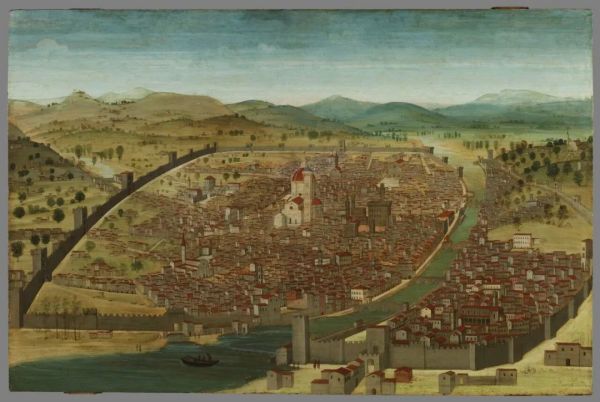
View of Florence from the South West, painting, by Francesco Rosselli, about 1495, Florence, Italy. Museum no. E.539-2015. © Victoria and Albert Museum, London
The exhibition begins with "Florentine Roots", looking at the city's burgeoning period of sculpture-making during the Renaissance. Donatello made the first marble sculpture "David" for the Opera del Duomo, and learned to use wax, clay and The experience of bronze creation. These early experiences, including relationships with painters such as Masaccio, outline the friendship, rivalry, and collaboration among his peers. Donatello's extraordinary creativity and practical ability are presented through drawings and models, as well as his often underestimated metalworking training.
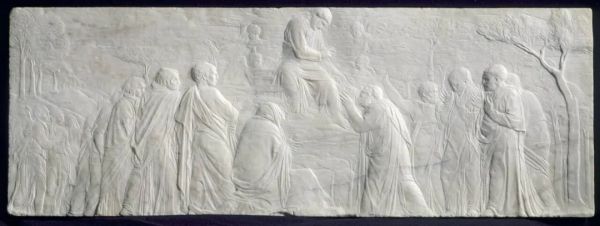
The Ascension with Christ giving the Keys to St Peter, relief, sculpted by Donatello, about 1428 – 1430, Florence, Italy. © Victoria and Albert Museum, London
The second part delves more deeply into how Donatello combined ancient and modern inspirations to create new visuals, such as his contribution to the revival of busts and representations in his Madonna and Child themed sculptures Intimate mother-child relationship. The exhibits will be placed in a continuous context, as we see both the works that inspired them and those of their later followers.
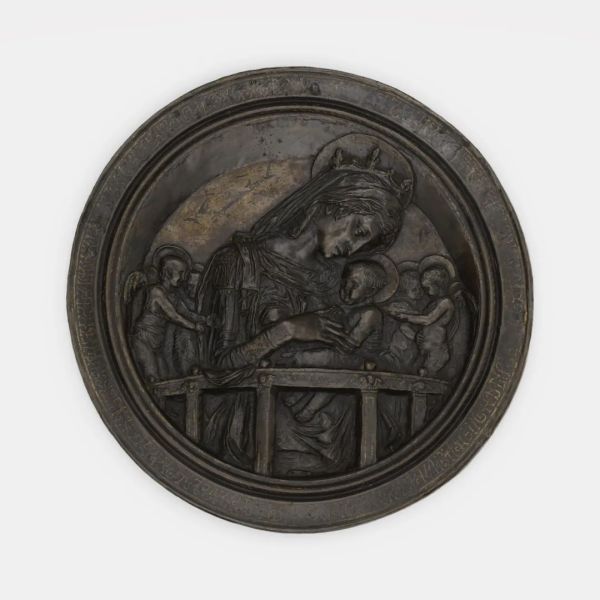
Donatello, Chellini Madonna, bronze with gilded details © Victoria and Albert Museum, London
These originals or replicas contain different levels of interpretation in different contexts, such as the "Cellini Madonna" in the V&A Museum, the "Piot Madonna" in the Louvre, and the "Piot Madonna" in Vienna. The "Madonna of Humility" at the Kunsthistorisches Museum has multiple meanings in different contexts and roles in religious activities. Donatello's iconic Ascension relief in the V&A's collection, and a range of works around it, will also showcase his extraordinary innovations in bas-relief and perspective.

Spiritello with a tambourine, by Donatello, Skulpturensammlung und Museum für Byzantinische Kunst der Staatlichen Museen zu Berlin. Photo Antje Voigt, Berlin
The third section focuses on a carefully selected group of bronze works, showing how Donatello used this expensive material to respond to the needs of his patrons, working in different contexts, public and private, sacred and secular. These sculptures reveal political and religious messages in both iconography and material selection. Small bronze sculptures, such as the "Spiritelli" inspired by antiquity, were used for religious and domestic purposes. But on site, you'll see Donatello's statues for the Siena Baptistery and Florence's Cathedral of Santa Maria del Fiore, which were removed from their original forms and developed into bronze statues, making them a 15th-century revival. Also included in this group of bronzes are two fountain statues related to the Medici family, and a bronze statue of Attis, created for a family in the Medici circle.
The fourth part focuses on Donatello's ten years in Padua (1443-54), examining his influence on the artistic development of the city and nearby cities such as Ferrara and Venice. Here I have to mention Donatello’s relationship with many sculptors and painters, as well as his inspiration to them, such as Giovanni da Pisa, Mantegn, Bellini ( Bellini), Schiavone, Zoppo. In Padua, he created the Equestrian statue of Gattamelata and the outstanding statue for the high altar in the Basilica of San Antonio. The three surviving statues are an excellent example of Donatello's extraordinary creative ability to interpret their religious significance. The altar relief, The Miracle of the Mule, in particular shows his innovative method of creating spatial and chromatic effects. Donatello's "Crucifix" for the altarpiece is exhibited side by side with the "Crucifix" by Niccolò Baroncelli in Ferrara, highlighting Donatello and Baroncelli. An important yet unrevealed link between Roncelli and his descendants.

Lamentation over the Dead Christ, bronze, sculpted by Donatello, about 1455 – 1460, Italy. © Victoria and Albert Museum, London
The fifth section will focus on Donatello's remarkable ability to imbue his work with emotion through design and material, which the sculptor often aimed at inspiring the devout. The imagery of the Passion of the Christ comes from the religious dramas in Florence at the time, which Donatello must have been very familiar with. The relief Lamentation in the V&A Museum and the crucifix in the Bargello National Museum stand out among the works of contemporaries and followers.
The final section of the exhibition will highlight the Renaissance master's artistic legacy, looking back at how his sculptures inspired generations of artists to imitate and reference Renaissance sculptural styles during the late Renaissance and into the 19th and early 20th centuries. The chapter opens with the marble David of the Martelli family, a work probably designed by Donatello in his later years and executed by his followers. The exhibition concludes with a magnificent marble relief of the Virgin and Child by sculptor Alceo Dossena from the Detroit Institute of Arts, a legend that Donatello continued into the 20th century Illustration of heritage.
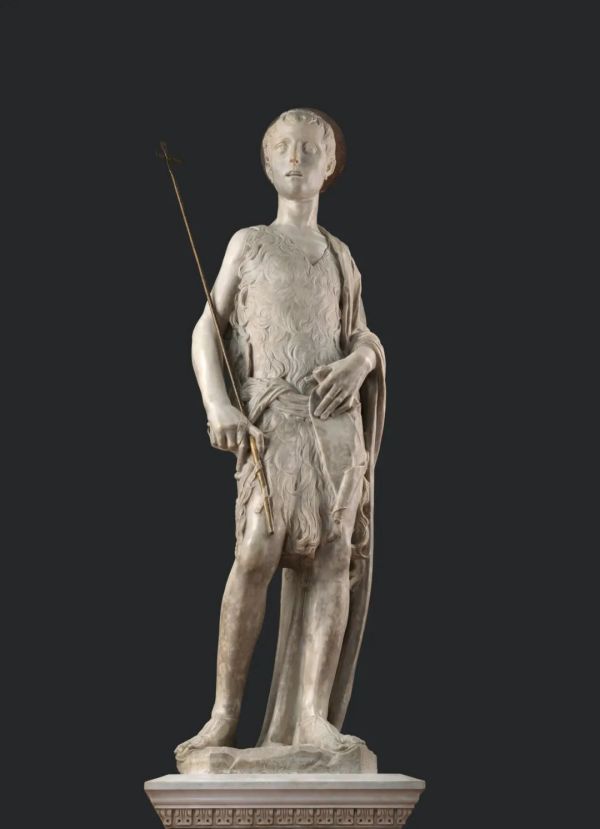
Attributed to Donatello and Desiderio da Settignano, St. John the Baptist Martelli, marble courtesy of Museo Nazionale del Bargello Firenze and The Ministry of Culture Italy
The exhibition time starts from February 11, 2023 and lasts until June 11, 2023.
(This article is compiled based on information from the British VA Museum and related materials from The Paper)
